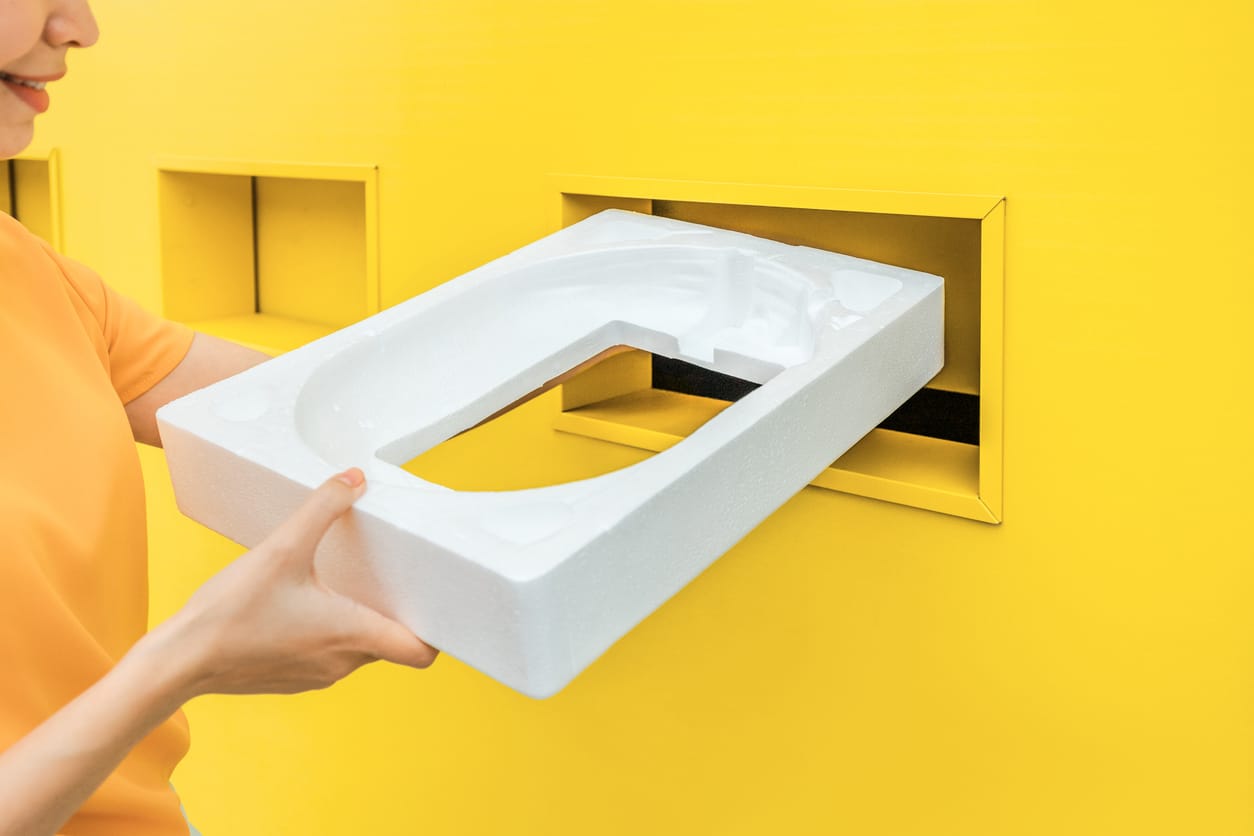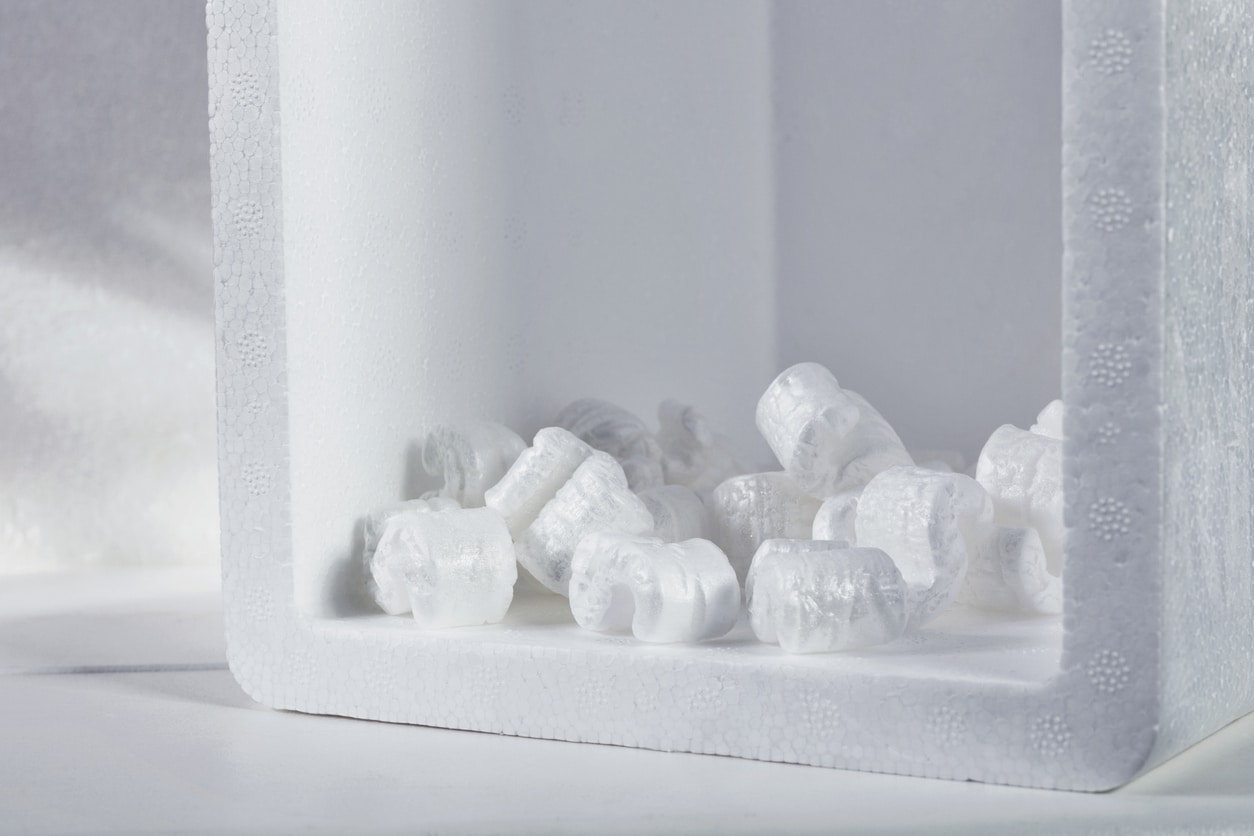
Is Styrofoam Recyclable? A Guide to Eco-Friendly Disposal
Expanded polystyrene (EPS) foam blocks may be easy and inexpensive to produce, but they can be detrimental to our environment. Globally, about 2.3 million tons of EPS are discarded into landfills each year, and the material can take up to 500 years to decompose. This material can leak toxins and chemicals into the surrounding environment, presenting health risks to humans and wildlife.
Similarly, extruded polystyrene (XPS) — or Styrofoam — is manufactured with chlorofluorocarbons (CFS) and hydrochlorofluorocarbons (HCFCs). These greenhouse gases can have damaging effects on our ozone layer.
Fortunately, there are various ways to repurpose EPS and XPS and avoid tossing them in the garbage.
Can You Recycle Styrofoam?
In theory, Styrofoam should be recyclable since it has the “chasing arrows” logo. However, most local governments don’t allow products like packing peanuts, foam egg cartons and trays in curbside recycling.
Styrofoam is technically recyclable, but it’s highly inefficient to recycle. It’s bulky, lightweight and difficult to clean due to its porous nature. It comprises over 90% air, yet it occupies significant space in commercial recycling bins. More compact recyclables like aluminum and glass cans are a better use of space.
Many curbside recycling programs consider EPS a “recycling contaminant,” meaning it is a non-recyclable item that has been placed in the recycling system anyway. Most of these programs either don’t accept EPS or lack the capability to recycle this material.
The Environmental Risks of Styrofoam
When polystyrene ends up in landfills, it can pose significant hazards to our ecosystems. Because the material is nonbiodegradable, it puts surrounding wildlife at risk. As it breaks down into smaller pieces, seabirds and other animals can mistake it for food. Styrofoam contains toxins that can harm or kill wildlife. It can also block their stomachs, impeding their sense of hunger and causing starvation.
Since polystyrene foam floats, it can travel through waterways across the globe. Polystyrene accounts for 10%-40% of plastics found in waterways and is the most frequently littered waste product.
How to Dispose of Styrofoam Without Throwing It Away
While Styrofoam isn’t always recyclable, you can still avoid throwing it away with the rest of your trash. Repurposing your items is one of the simplest and most effective ways to help the planet. Finding a new use for your polystyrene foam keeps it out of landfills, minimizing environmental harm. It also reduces the need for new Styrofoam production, which helps conserve energy and resources.
Repurposing Styrofoam offers several opportunities to get creative. Whether gardening, crafts or DIY insulation, the possibilities are countless. Here are some innovative ways to repurpose your Styrofoam:
1. Potted Plant Drainage
When repotting a plant, you can reduce some of the volume and weight by filling the bottom of the container with foam packing peanuts, then pouring soil over them. Styrofoam makes an excellent drainage layer for potted plants or seedlings, preventing excess moisture and rotted roots.
Gardeners typically use gravel or pebbles for drainage, which can make potted plants heavier and more difficult to work with when repotting. Styrofoam is lightweight, making it a handy alternative.
Keep in mind that you should only use this method for non-edible plants. Using Styrofoam for edible plants will contaminate the food and make it unsafe for consumption.
2. Stuffing or filling
If you have any old bean bag chairs, stuffed animals or throw pillows that have lost some of their stuffing, you can restore their structural integrity by filling them with Styrofoam peanuts.
3. Arts and Crafts
Styrofoam can be used for arts and crafts, like pencil or pin holders, holiday ornaments and as part of various DIY home decor projects. Make sure the Styrofoam is clean and dry before you use it.
4. Insulation
Since Styrofoam is durable and can withstand extreme temperatures, it can be used to insulate structures like attics, garages and tool sheds. Consult a professional to ensure the correct application technique.
How to Find a Styrofoam Recycling Facility
While recycling is one of the best things for our environment, it isn’t always an option with polystyrene foam. However, you may be able to recycle, or at the very least repurpose, your Styrofoam depending on where you live.
If curbside recycling isn’t an option, you can try looking for a recycling facility that will accept your Styrofoam. These facilities will usually take clean EPS and XPS packing materials, like those in protective packaging or food containers. Research online to find the nearest facility, or call your local recycling center, to verify if your foam packaging is recyclable.
Dispose of Styrofoam Using These Green Methods
Whether you decide to repurpose your Styrofoam or drop it off at your local recycling center, these environmentally friendly methods help keep this material out of our nation’s garbage cans and landfills. Lower your carbon footprint one packing peanut or foam piece at a time with these sustainable disposal tips.




Post a comment